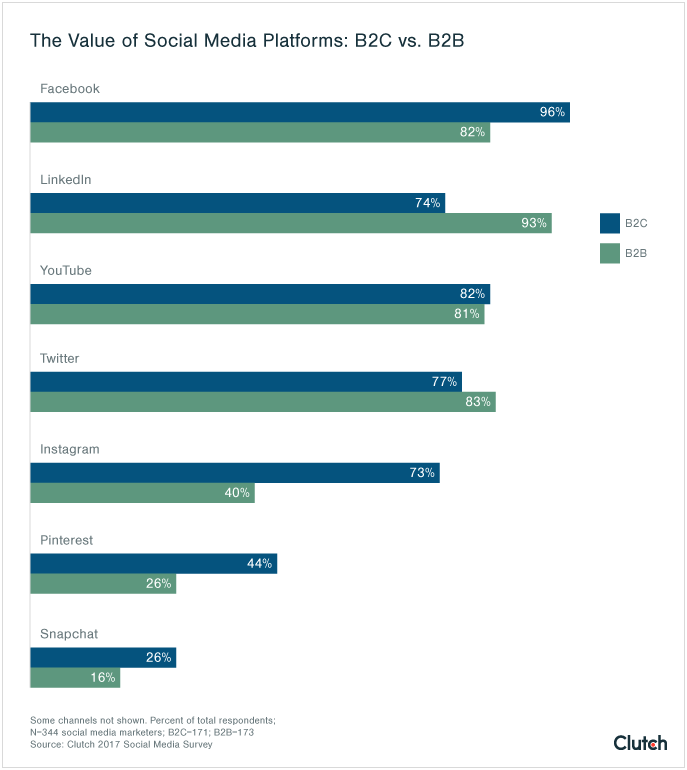How to Create a Social Media Strategy for Your Business

How to Create a Social Media Strategy for Your Business
A social media strategy is a big-picture blueprint of your approach to social media. Follow these 6 steps to begin documenting a formal social media strategy for your business.
Social media marketing can be a daunting task for any business. There are so many options and opportunities. How can you be sure it’s worth the time and energy you put into it?
Is it worth the effort?
More than 50% of businesses say “Yes.” Social media positively influences their sales and revenue. So the real question is, how can you create a strategy that puts you on the winning side of the fence?
According to our recent survey, 344 marketers from around the world agree:
“The major challenges companies face with social media are not having enough human and financial resources (26%), lacking a formal strategy (24%), and building a community of followers and influencers (24%).”

The good news is that creating a formal strategy will help with the other two major challenges. You’ll budget the human resources that you need and increase your chances of building a healthy community of followers and influencers.
What Is a Social Media Strategy?
A social media strategy is a big-picture outline of how your company or brand will approach social media. The following guide will walk you through creating your own formal strategy in 6 steps.
- Goal setting
- Research
- Choosing your platforms
- Creating a content strategy that fits your audience
- Compiling tools and resources
- Determining how you’ll measure your success.
When your strategy is complete, you’ll have a solid grasp on where you’re going and how to get there. Then, you’ll be ready to write your plan.
What’s the Difference Between a Social Media Strategy and a Social Media Plan?
A social media strategy is the foundation that your social media plan refers back to for guidance.
A social media strategy draws a big-picture blueprint of the approach you’ll take to succeed with your social media efforts. It’s rooted in research and goal-setting. Think of it as a long-term resource guide that isn’t meant to be changed or adjusted. You’ll refer back to it often.
A social media plan puts your strategy into action. It’s a detailed report (like a giant “to do” list) that you’ll follow as you launch and nurture your social platforms. Unlike a strategy, your plan will change and grow as you test, measure, and adjust along the way.
Let's get started creating your social media strategy.
Step 1: Set Your Social Media Goals
What are the most important things you’d like to achieve through social media?
Most companies want to increase engagement and leads with their customers for the ultimate goal of higher conversion rates (more sales).
Engage > Generate Leads > Convert Leads to Customers
If you’re a B2C company then some of your goals might include audience growth, engagement, brand awareness, customer loyalty, and community.
B2B companies may have similar goals but often lean toward building professional relationships and developing niche awareness.
Learn how to optimize your social media strategy for these goals with 7 powerful tips.
What will your area of focus be? Think about your company's goals and website, and try to set realistic milestones that are:
- Specific (think in numbers)
- Measurable (measure in numbers)
- Attainable (don’t expect 2 million likes or a 50% sales jump overnight)
- Realistic (don’t choose too many goals and do start small)
- Timely (be sure to put your goals into a timeframe so you can analyze and adjust)
Step 2: Research Your Audience and Competitors
Find out what’s working in your industry and what keeps your audience engaged.
The marketing survey mentioned earlier found that:
“The most valuable social media platforms for businesses are Facebook (89%), LinkedIn (83%), YouTube (81%), and Twitter (80%).”
Try researching the 4 main channels. Instagram is one of the fastest-growing social networks, so you might want to spend some time there too. Try to find out:
- What channels work best for your competitors?
- What type of content is getting the most response with their audience – simple text, articles, videos, images, quotes, or surveys?
- What’s the personality of their audience? Do they prefer inspirational quotes or images over informative articles? Do they like to answer questions that let them voice opinions?
When your research is complete, ask yourself 2 questions:
- What are some of the strategies and tactics your competitors are using that might help you achieve the goals you set in step 1?
- Do your goals line up with what’s working in your industry, or do you need to adjust them?
Step 3: Choose Your Social Media Platforms
Which social media platform or platforms will you focus your efforts on?
Now that you’ve identified your goals and conducted competitor research, you’re ready to decide which social media platforms will be a smart choice for your business. Try to pick one as a priority to start. You can grow into more over time.
Here’s a look at the social media platforms that businesses value most.

You’ll notice that B2C and B2B businesses tend to prefer different networks. Keep that in mind as you’re making decisions about where your business will fit in.
Learn how to identify the best social media platforms for your business in 3 easy steps.
Step 4: Create a Content Outline
Decide what type of media you’ll share and how you will publish it.
What type of content will you share?
Here are some questions to ask yourself as you make this decision:
- How can you help your customers? What type of content can you publish that’s helpful to your audience and relative to your business?
- How can you entertain or hold the interest of your audience? Do they love videos, devour long articles, crave new data, or jump at the chance to voice their opinion?
- What types of media (videos, articles, stunning images, polls, etc.) will you use?
Keep your goals and customer insights in mind as you map your content plan.
Check your content for relevancy every step of the way. Publishing random content just to get attention isn’t going to improve your sales or SEO. Be sure your content supports your product or service in some way.
Step 5: Gather Your Resources
Don’t go it alone! Tools, automation, and company employees can save you time and make creating a social media strategy fun.
First, compile a list of software that will help you create better content and schedule your posts ahead of time.
There are many tools and resources (some are free) that can supercharge your social media success. Below is a list of what you’ll need to get started, along with a couple popular choices in each category. A simple Google search will offer many more options.
- Images: Pexels, Pixabay
- Artwork: Canva, Pablo
- Videos: Create them from scratch, offer animated explainer videos, or create GIFs
- Post scheduling software: Hootsuite, Sprout Social
Explore other easy-to-use tools to create images for social media.
Next, put together your human team.
If you’re flying solo, budget your time and set your goals accordingly. Be consistent and targeted in your approach.
If you’re part of a company, think about which employees might be able to help out. Learn more about the secret talents and passions of everyone in your company. Do you have any:
- Artists
- Photographers
- Video creators
- Writers
- Social media influencers
- Quick-witted comedians
- Outgoing personalities that might be good at chatting
- Insomniacs who can respond to comments and police for spam during the night shift
Imagine how much easier things will be if everyone contributes on a consistent basis.
Step 6: Decide How to Measure Results
When and how will you test the effectiveness of your social media efforts?
Keep in mind that social media isn’t just fun and games. You’ve set specific goals and will want to keep a close eye on the results so you can test and adjust your plan along the way.
Many of the post scheduling software also includes analytics and insights so you can measure the success of your social media channels.
If you’re not sure how to use social media analytics, spend an afternoon learning how to measure your social media success. You’ll discover how to:
- Adjust your content for more activity and interaction
- Gain insights into your audience
- Calculate your cost per customer
Begin Creating a Social Media Plan
If you’ve completed all 6 of the steps above and written the results into an organized report, then you officially completed your social media strategy.
The final step before launching your social media channels is the planning phase. This is where you decide what, where, and when to post. You’ll assign tasks to your team and fill out social profiles.
Before you begin creating a social media plan, take a week or so to let your strategy sink in. Remember, your formal social media strategy is a guide that keeps you on track as you move into the planning and execution stages. You want to avoid changing your strategy once the planning phase begins.
If you're ready to create your social media plan, follow our step-by-step guide.
